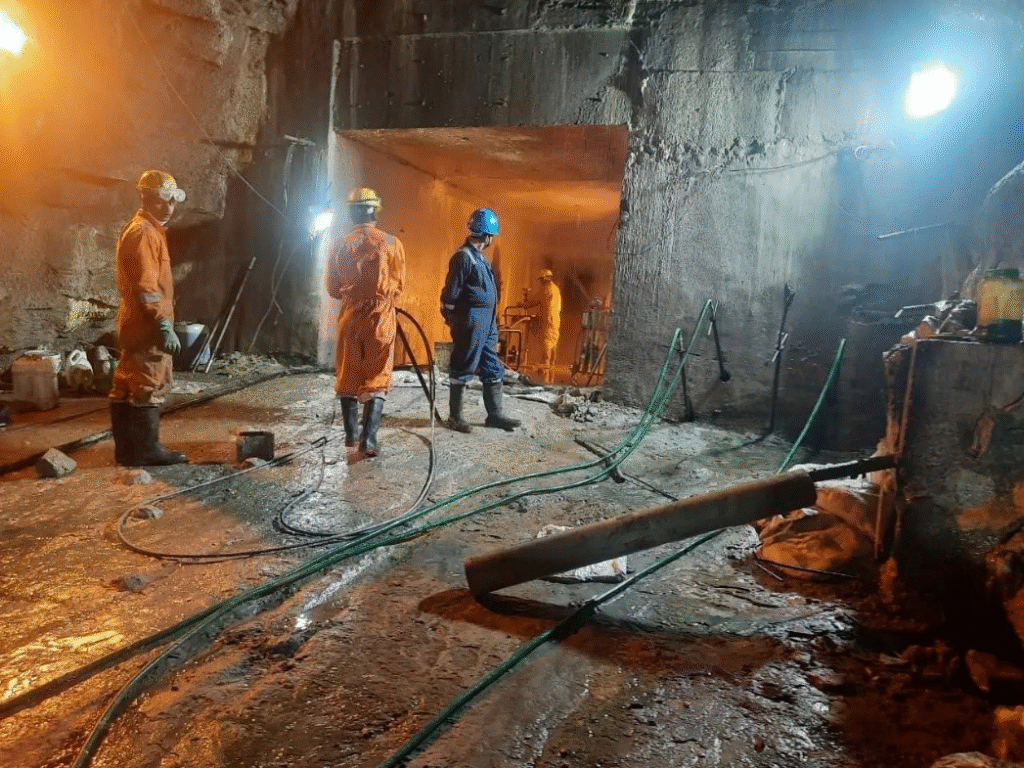PU Injection – Modern Waterproofing for demanding conditions

Sales and Marketing, SP Concare Pvt. Ltd.
What exactly is PU Injection, and why is it gaining popularity in waterproofing?
PU (Polyurethane) Injection has become a go-to solution in structural waterproofing, particularly for saving structures facing severe leakage issues. As Mr. Sebastian Fernandes explains, “Chemical grouts are injected into voids, cavities, soils, or rock formations where they react to form a solid, semi-solid, or gel-like substance.” The method provides long-term sealing and structural stabilization-making it invaluable in critical applications.
Where is PU Injection commonly applied in Indian construction?
PU Injection is widely used to address water ingress in basements, tunnels, dams, marine structures, and foundations. It also enhances soil properties, increasing load-bearing capacity and reducing the risk of ground settlement-key concerns in infra-structure and high- rise construction.

How does PU Injection compare with traditional cementitious or epoxy systems?
PU resin stands out due to its flexibility and reactivity with water. Unlike rigid systems, PU resins expand upon contact with water, forming a sealing foam that adapts to movement—making it ideal for dynamic or shifting cracks.
The resin expands upon contact with water (or a catalyst), creating a foam or gel-like substance that effectively seals the area.
What is the typical site application process?
- The procedure includes:
- Identifying the leakage pattern
- Drilling angled holes along the crack
- Installing injection packers
- Injecting PU resin under pressure
- Sealing and finishing the treated area
This stepwise method ensures a precise and lasting seal.
Are there different types of PU resins?
Yes, SP Concare offers a diverse range of PU systems developed in collaboration with international experts:
- One-component hydrophobic – Semi Rigid Foam
- One-component hydrophobic – Full Flexible Foam
- One-component hydrophobic – Ultra Low Viscosity resin
- One-component hydrophilic – Strong resilient Foam
- Two-component hydrophobic – Rigid Foam
These resins cater to various site conditions, from water-bearing concrete to ground consolidation.
What challenges exist in applying PU Injection?
“The biggest hurdle is improper diagnosis and lack of skilled applicators.” Quality outcomes depend on accurate leak detection, the right equipment, and trained technicians.
What’s the future of PU Injection in India?
PU Injection has been present in India more than 20 years, but it’s real potential is just unfolding. From basic leakage control to soil stabilization, tunnels, and dam restoration, the technology is expected to see significant growth in both urban and infrastructure development.
Final advice for consultants and project managers?
“PU Injection isn’t cosmetic work—it’s highly technical. As the method becomes more mainstream, there’s a risk of commoditization. He emphasizes the need to choose the right resin and work only with certified, experienced applicators.
Mr. Sebastian Fernandes, Director of Sales and Marketing at SP Concare Pvt. Ltd., brings over 25 years of field experience in waterproofing and repair -restoration products. Good Customer relationship and Known for his deep industry knowledge and commitment to service excellence. He plays a key role in driving Sales of SP Concare in the Indian waterproofing market.
SP Concare Pvt. Ltd
Web : www.spconcare.com






